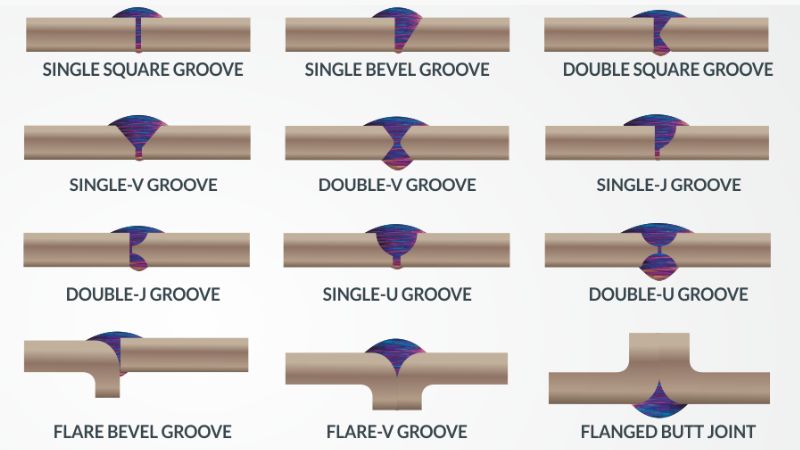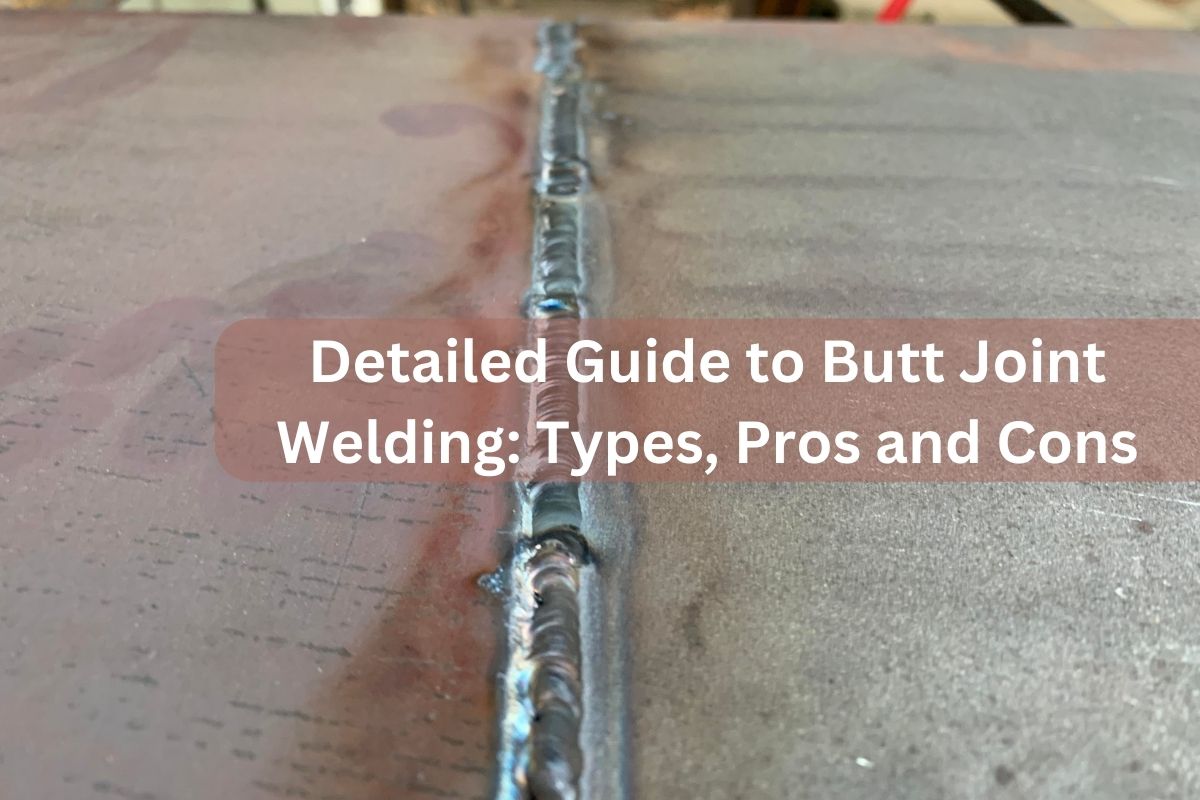Butt joint welding is a popular type of welding joint. Many industries use this weld joint. For instance, it is commonly found in manufacturing, automotive, and construction.
Then, what is a butt joint?
This article discusses the meaning of butt joints and their types.
Also, I will share the advantages and disadvantages of this joint.
This way, you will be able to determine whether this joint is suitable for your welding project.
What is a Butt Joint Welding?
Welding butt joints is easy and quick. The reason is this joint has a simple design.
You just need to place two pieces of metal end to end. Then, weld them along the join.
The workpieces must be parallel.
So, make sure that the surface of the workpiece does not overlap. Two pieces of metal must have a similar thickness to create a seamless weld.
The butt joint is often applied for metal sheets. But you can also use it to join curved pieces such as pipes.
You just need to apply the molten metal around the pipe to weld the pipe.
Since this technique is simple, the process of welding will be fast and affordable.
Types of Butt Joints

There are five types of butt joints in welding.
These types depend on the edge preparation before being welded. The purpose of edge preparation is to strengthen the welding joints.
Then, what are the types of edge preparation for the butt joint?
Let’s discuss them one by one.
1. Square Butt Weld
This basic butt joint welding has the simplest design. It is because it does not require any edge preparation.
However, this technique is only suitable for thin metal pieces. Make sure that the thickness of the metal is less than 3/16 inches.
When square butt joint welding is used for thick metal, the joint will not be able to withstand much load and stress.
To create a square groove joint, you just need to place two pieces of metal in a parallel position.
Then, leave a 2 mm gap between these workpieces. This root gap is useful to ensure the filler metal can penetrate the joint.
Ensure the gap is not too large or small, as it can cause welding defects.
2. Bevel Butt Weld
This joint consists of two designs: single and double bevel butt welding.
Then, what are the differences between these designs?
The single bevel joint has a beveled workpiece.
The welder can determine the angle to bevel the workpiece based on the thickness of the metal. Besides, another workpiece has a square edge.
Besides, one workpiece is beveled in the double-bevel groove to create a pointed edge. Meanwhile, another workpiece still has a square edge.
3. V-Butt Weld
In the V groove butt weld design, the welder needs to bevel both edges of the workpiece. This way, these workpieces will form a V-shaped gap.
V-butt weld is ideal for metal with a thickness of more than 3/16 inches.
Beveling the thinner metal may require a little bit of effort. So, beveling it using a mechanical beveled or a plasma torch is recommended.
Because of its complicated edge preparation, V groove weld is more costly than square butt weld.
It not only requires extra time and effort. But, it also needs more filler metal to fill the gap.
However, the result of welding is stronger than square butt weld.
4. U Butt Weld
U butt weld has two designs: single and double butt joint weld. This type of weld has a U-shaped gap.
So, both edges of the workpieces should be cut to form U-shape.
This design is less popular than the V-groove design.
The reason is forming the U-shaped gap requires special treatment. Therefore, the cost to cut the edge is quite expensive.
However, the U groove weld requires less amount of filler metal.
Furthermore, the final result will be stronger and more durable. It is also resistant to cracks.
5. J Butt Weld
The design of the J groove is half of the U groove. The welder just needs to bevel one edge of the workpiece.
Then, leave another edge of the workpiece square.
J-butt weld has two designs: single and double J grooves. Both designs are quite challenging to bevel. So, this design requires more cost for machinery.
Additionally, it requires skill to determine the right angle for the electrode. But, you will be able to save on the cost of filler metal.
Read Also : Tee Joint Welding: Definition, Types and Easy Tips
Advantages of Butt Joints
Butt joints offer a lot of advantages. That’s why many welders use this welding joint.
Here are some pros of using a butt joint.
- It is Versatile
Butt joint offers possibilities to weld various types and sizes of metal surfaces. It is not only useful for welding metal sheets.
But it can also be used to welding metal frames for windows, doors, or racks. It is called mitered butt joint welding.
- Welding Various Materials
You can use this primary joint type to weld various types of materials. For instance, it can be applied to stainless steel, iron, aluminum, titanium, and nickel.
- Reducing Defects
During the welding process, the heat forces out the collision.
So, it can reduce the chance of cracking, solidifying, and porosity.
Additionally, the weld joint will look smooth because the filler metal fills the groove.
- High Quality and Affordable Weld
Butt-joint is simple to do. But, the final welding result is strong and durable.
I think that it is better to use V-groove weld or beveled weld to enhance its strength. In addition to its high quality, this joint costs lower than other types of welds.
Read Also : Visual Inspection in Weld Quality Testing: How it Works?
Disadvantages of Butt Joints
Even though butt joint offers many benefits for welders, it also has some disadvantages.
Here are some cons of using butt-joint welds.
- This type of joint is only suitable for thin metal. If you want to weld a thick workpiece, you need extra effort and time to bevel the edge of the workpiece.
- To prevent distortion and ensure a precise result, it is necessary to add a backing bar.
- There is a high risk of distortion when welding a thin metal sheet without using filler.
- This joint only works best for joining metal pieces with the same thickness.
- The butt-joint technique is also time-consuming, especially for beginners. The reason is the welders need to bevel the edge of materials.
In conclusion, butt joint welding is a versatile and cost-effective technique that can be applied in various industries. Apart from these advantages, this joint also has some disadvantages.
So, you must be wise to determine whether this technique suits your project.


